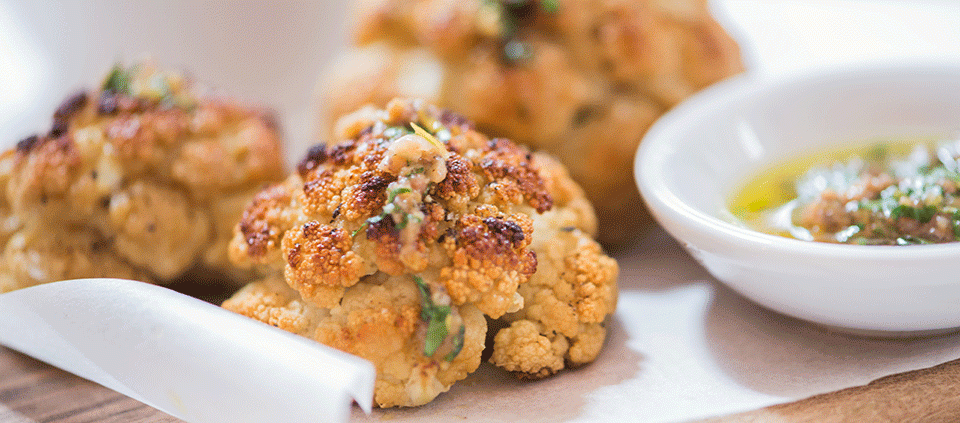How to Bring Side Dishes to Center Stage on Your Table

When people think main course, they usually think protein. Sides—the vegetable and grain dishes—are often an afterthought.
But when we bring sides to center stage, we eat more vegetables, and that’s your main goal for a healthy plate. The other cool thing about sides is that they’re very easy to prepare, but they offer a really complex taste profile. You can dress them up with sauces, add some spices, or just keep it simple, and they still taste great.
Here are a few tips for making your sides something special.
Roast the roots: In general, root vegetables are my go-to for side dishes. They’re very substantial, so they leave you feeling satisfied, and they have excellent nutritional value. Plus they’re hard to overcook and it’s easy to tell when they’re undercooked. When you roast root vegetables, it brings out the natural sweetness of the ingredient. You can roast root vegetables whole in a 400-degree oven, or cut them in half or in cubes. I recommend adding a little water to the pan and covering it so the veggies steam while they’re roasting, which helps them cook more quickly. Take the cover off at the end for a little while to get that great caramelizing effect. Then peel them and make a mash, add a sauce, or toss them with a spice mix.
Spicing sides: To make a spice mix for your roasted vegetables, warm your spices in a little olive oil on the stovetop and add it to your mash or toss it with cubed veggies. Experiment with pairing flavors and vegetables. I like to pair squash with cinnamon and coriander; when I roast cauliflower, I make a relish with raisins, almonds, green olives, olive oil, and red wine vinegar and drizzle it over the top.
Leaf logic: For delicate leafy greens, less cooking is better. Cook them 80 percent of the way and then serve them, because they’ll keep cooking on the plate. (That’s not true for kale, though, which you can go ahead and cook until tomorrow!)
Go for the grains: Don’t be intimidated by the less common grains, like teff, amaranth, millet, and quinoa. You can test them along the way, like pasta, to see when they reach the right consistency, and just add more liquid at the end if it’s evaporated but the grain needs more cooking time. A tip for brown rice is to soak it in water overnight, which softens the outer shell so it cooks more quickly. Soaking also allows the naturally occurring arsenic in rice to leach out. Before you cook it, drain and rinse it, and then add your cooking water.
Here's one of my favorite side dish recipes.
Grilled Harissa Cauliflower with Corn and Avocado Relish
For relish:
2 tablespoons rice wine vinegar
1 tablespoon coconut sugar
2 tablespoons olive oil
2 cups corn, cut from one cob
¼ cup red bell pepper, small diced
¼ cup red onion, small diced
¼ cup cucumber, small diced
2 tablespoons dill or parsley, chopped
½ avocado, diced
1 head of cauliflower, halved and cut into 1-inch thick “steaks”
2 tablespoons grapeseed oil
Salt and black pepper
1 tablespoon dry harissa spice
Preheat outdoor grill.
Mix vinegar, coconut sugar, and olive oil until sugar is dissolved. Combine the rest of ingredients for the relish. Season with salt and pepper. Set aside.
Coat cut cauliflower with grapeseed oil. Lightly coat both sides with harissa spice, and sprinkle with salt and pepper.
Place steaks on the grill and cook until lightly browned, 3 to 5 minutes. Flip, turn heat down to medium and grill 10 to 12 minutes, or until cooked through.
To serve, divide cauliflower on plates and top with relish.
Find out about programs with Jeremy Rock Smith at Kripalu.
© Kripalu Center for Yoga & Health. All rights reserved. To request permission to reprint, please e-mail editor@kripalu.org.
Jeremy Rock Smith, Kripalu faculty and a graduate of the Culinary Institute of America, began his career in classical French cuisine.
Full Bio and Programs